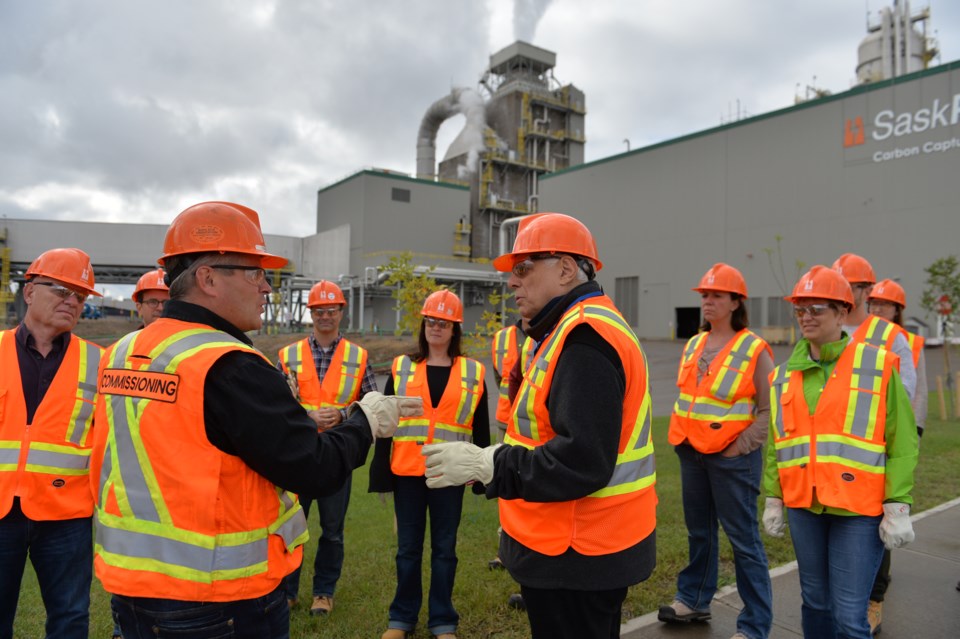Last month Pipeline News spoke to Grant Fagerheim, president and CEO of Whitecap Resources Ltd. The company has now closed on its $940 million deal to purchase the operating interest in the Weyburn Unit, Saskatchewan’s first, and largest CO2 miscible flood. The company has an ambitious drilling program planned, including a resumption of ongoing expansion of the CO2 miscible flood enhanced oil recovery operation. One of the key nuggets from that interview was the fact Whitecap would like to do more, elsewhere.
Fagerheim said, “We do believe carbon capture technology is an important part for, not only now, but into the future. Therefore, (we are) wanting to continue to further our understanding of carbon capture and further develop and expand into assets beyond Weyburn.
“This is not going to just stop at Weyburn. Because of what they have been able to do, Cenovus, with their very strong technical people, we think this can be furthered on a go-forward basis.”
Earlier in the year, Cardinal Energy Ltd. announced it closed their acquisition of the Midale Unit.
Husky has been working on carbon dioxide-based enhanced oil recovery in the Edam area since at least 2008. Ditto for Tundra Oil & Gas Limited, in the Sinclair field. Canadian Natural Resource Ltd. tried, but was unsuccessful, to get the CO2 from the Boundary Dam 3 project for its Steelman field.
Clearly there is a desire for more CO2 in the oilfield.
One wonders when Crescent Point Energy Corp. will start getting serious about using CO2, perhaps in its Viewfield Bakken field as it matures. Maybe it’ll be applicable in the Shauvaon field, too?
Ask the Saskatchewan Party leadership candidates, one of whom will be premier by the end of January, and you’re likely to get strong support for carbon capture and storage (CCS), or its new handle, carbon capture, utilization and storage (CCUS). But in speaking to both leadership candidates with the New Democratic Party, and you will find neither Dr. Ryan Meili nor Trent Wotherspoon are in favour of building additional carbon capture units. It’s too expensive, they both say. Considering how much it cost to put a capture unit on just one unit that produces about 110 megawatts of power, it’s a valid point. Given that either Meili or Wotherspoon could be premier, two years from now, it could mean the end of additional carbon capture.
The oilpatch can’t grow its CO2-EOR efforts on a large scale without significant carbon capture projects. Husky is doing its own thing, testing smaller scale capture projects. How broadly that can be applied remains to be seen.
On top of all this SaskPower has to consider that natural gas combined cycle benefits greatly from low natural gas prices for the better part of a decade. There aren’t much in the way of indicators that’s going to change anytime soon. Compared to CCS coal or nuclear, it’s pretty cheap, easy and quick to build baseload combined cycle natural gas plants. You can also build them pretty much anywhere, relatively speaking. That means you can build them right beside your main load centres, Regina and Saskatoon, and eliminate most of your line loss, the power lost due to resistance in the power lines over long distances. If you had line loss of around 11 per cent, from Estevan to Saskatoon, you become that much more efficient by putting your next power plant just outside Saskatoon. That also means a corresponding decrease in emissions of 11 per cent for the same power used.
Doing that means no more additional large-scale CO2 for the oilpatch.
The oil industry has a vested interest in seeing SaskPower adding more carbon capture projects. Additional CO2 can extend the life of oilfields by decades, dramatically improving recovery factors. Meili makes the point that using CO2 to get more oil doesn’t really reduce emissions as much, because, let’s face it, you’re using it to produce more fossil fuels. The counter-argument to that is everyone else is still producing oil but not sequestering any carbon dioxide in the process.
There’s more to the decision to go ahead with more carbon capture projects than cost, or carbon taxes. The future of significant parts of our oilpatch could depend upon it.




